Physics > QUESTIONS & ANSWERS > UNIT 1: HOMEOSTASIS, CELL PHYSIOLOGY, AND NEUROPHYSIOLOGY QUESTIONS WITH VERIFIED ANSWERS (All)
UNIT 1: HOMEOSTASIS, CELL PHYSIOLOGY, AND NEUROPHYSIOLOGY QUESTIONS WITH VERIFIED ANSWERS
Document Content and Description Below
UNIT 1: HOMEOSTASIS, CELL PHYSIOLOGY, AND NEUROPHYSIOLOGY Chapter 1 1. Define and explain the relationship between: Cells, Organs, Organ systems, Tissues Cells are the simplest structural units whi... ch eventually differentiate into specialized cells. Tissues are an aggregate of a single type of specialized cell. An organ is one type of tissue combining with other types of tissues. Multiple organs work together to form an organ system. 2. What are the four broad categories of cell/tissue type? Muscle cells, neurons, epithelial cells, connective-tissue cells muscle tissue, nervous tissue, epithelial tissue, connective tissue 3. Give 5 examples of body functions performed by muscle cells. Smooth muscle in gastrointestinal tract contracts to help digestion Smooth muscle in esophagus helps squeeze food down to stomach Cardiac and smooth muscle allows the heart to contract and pump blood Skeletal muscle allows a person to smile Skeletal muscle allows a person to walk 4. Draw a figure regarding body compartmentalization, including: external environment, extracellular fluid, epithelial cells, basement membrane, interstitial fluid, intracellular fluid Intracellular fluid – fluid in cells Interstitial fluid – fluid between cells (ECF) Extracellular fluid – fluid outside cells (interstitial fluid and intravascular fluid) Basement membrane – epithelial cells rest on the extracellular protein layer which anchors tissue 5. Explain two different uses of the word “tissue”. Tissue is formally defined as an aggregate of a single type of specialized cell. It also denotes the general cellular fabric of any organ or structure which can contain multiple tissue types. 6. With regard to organ function, what is a “functional unit?” A functional unit when referring to an organ are small, similar subunits that each perform the function of the organ. The nephron is the functional unit of the kidney. 7. List the 10 organ systems that make up the human body. Circulatory, digestive, endocrine, urinary, respiratory, musculoskeletal, integumentary, lymphatic, nervous, reproductive 8. What is the relationship between body cell function, organ system function, and the composition of the extracellular fluid? As blood flows through the blood vessels in all parts of the body the plasma exchanges oxygen, nutrients, wastes, and other substances with the interstitial fluid. This means that the blood in the ECF contains the same amounts of oxygen and nutrients as the cells, tissues and organs that will receive the oxygen and nutrients. Extra cellular fluid contains large amounts of sodium, chloride [Show More]
Last updated: 1 year ago
Preview 1 out of 4 pages
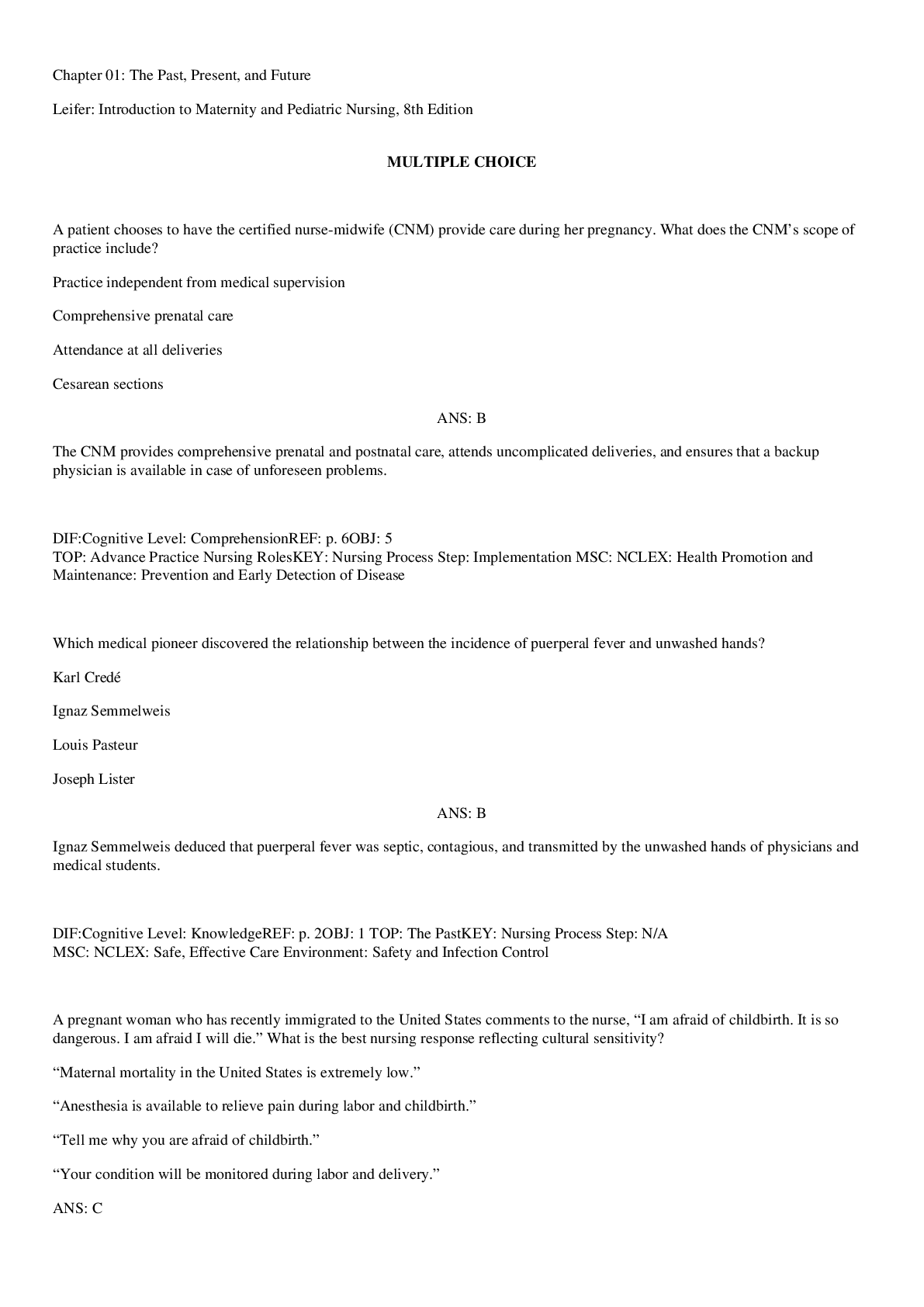
Buy this document to get the full access instantly
Instant Download Access after purchase
Add to cartInstant download
We Accept:

Reviews( 0 )
$9.00
Document information
Connected school, study & course
About the document
Uploaded On
Jun 14, 2021
Number of pages
4
Written in
Additional information
This document has been written for:
Uploaded
Jun 14, 2021
Downloads
0
Views
33





.png)

.png)
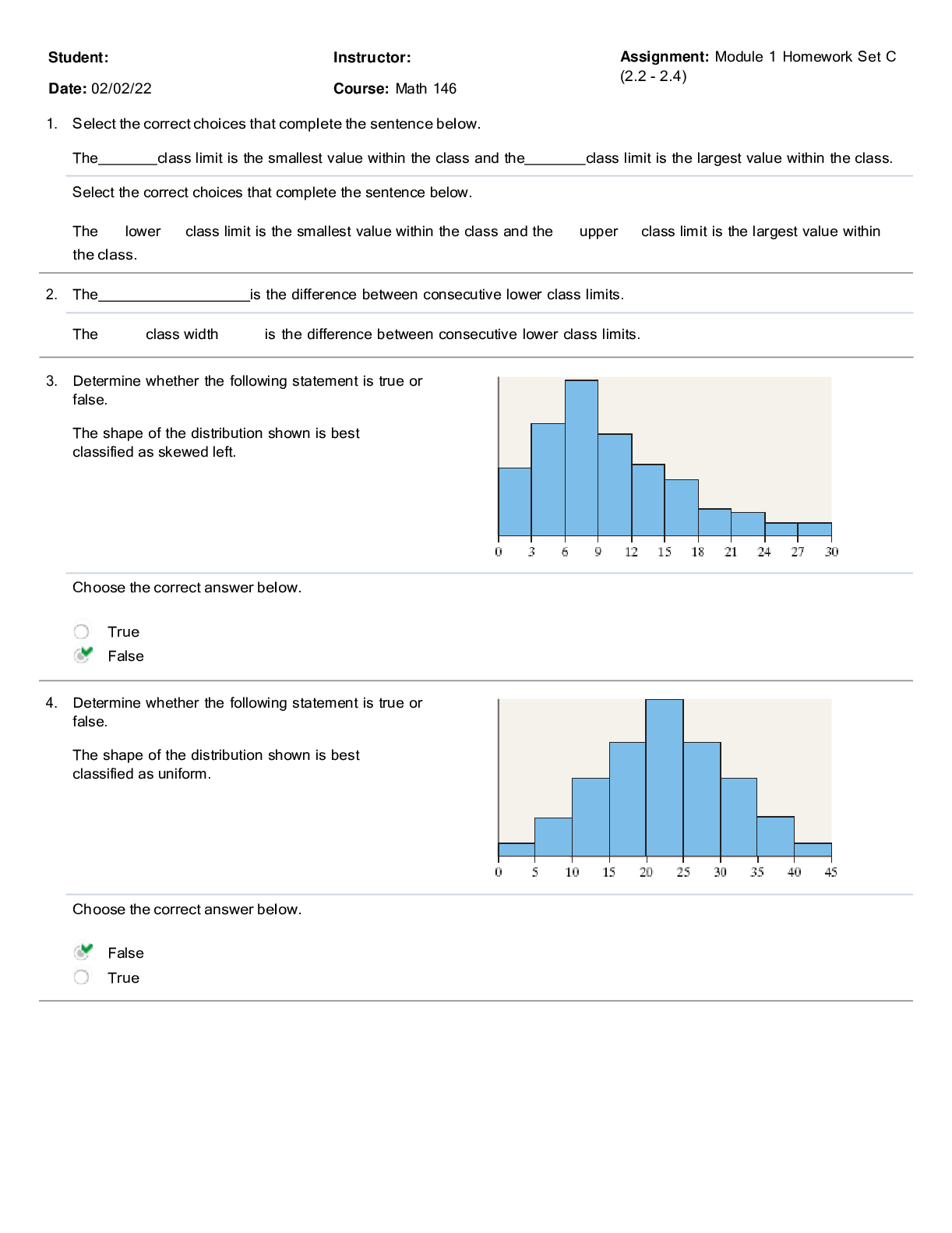





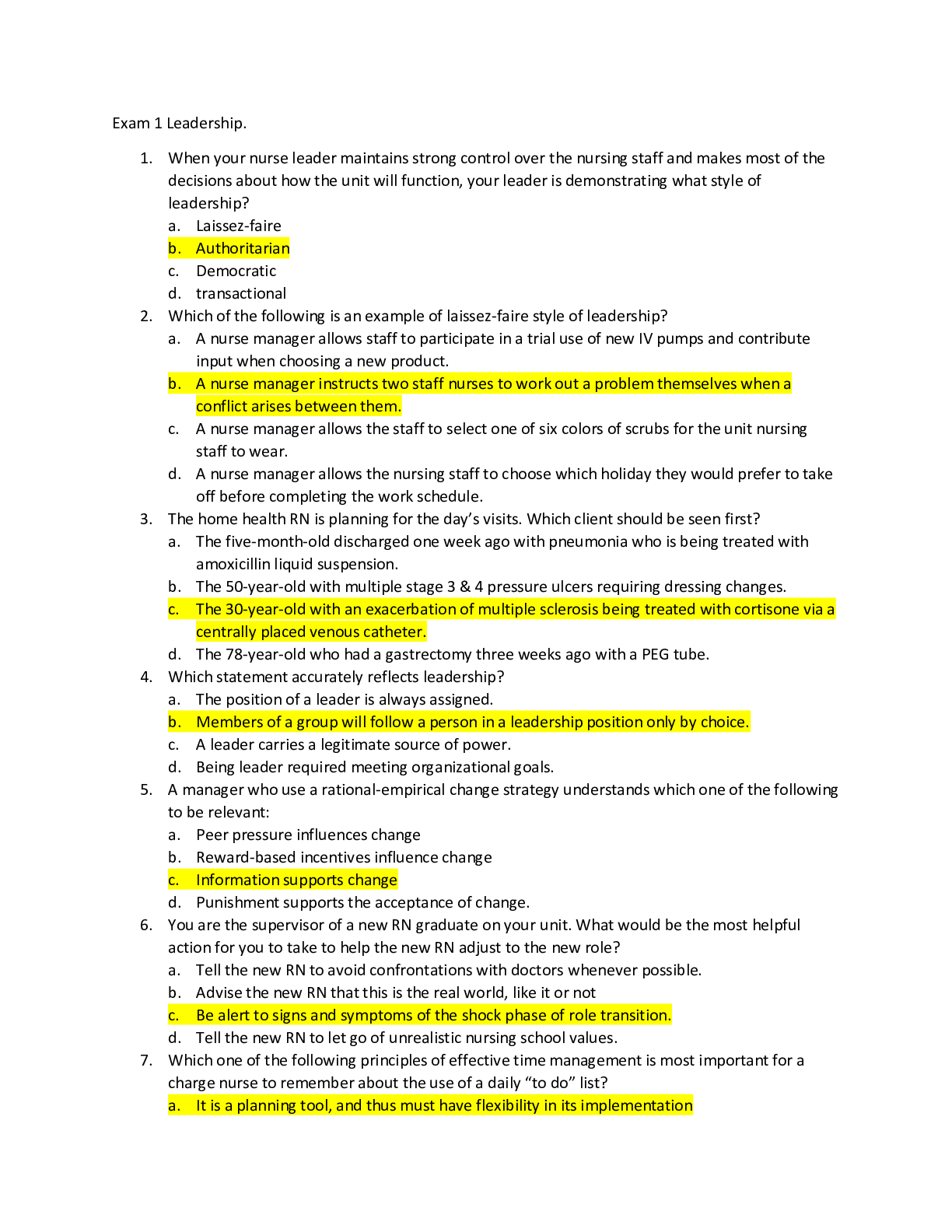
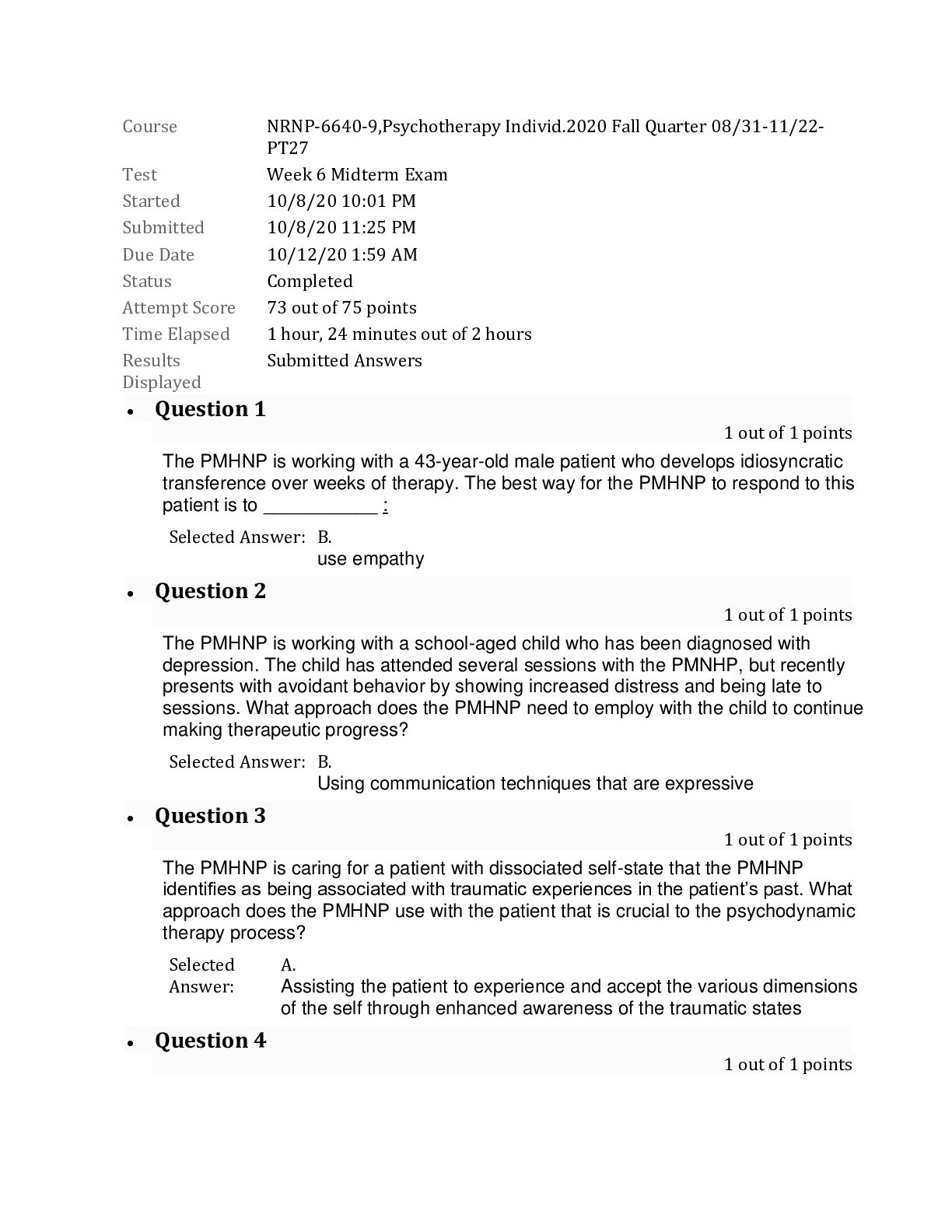

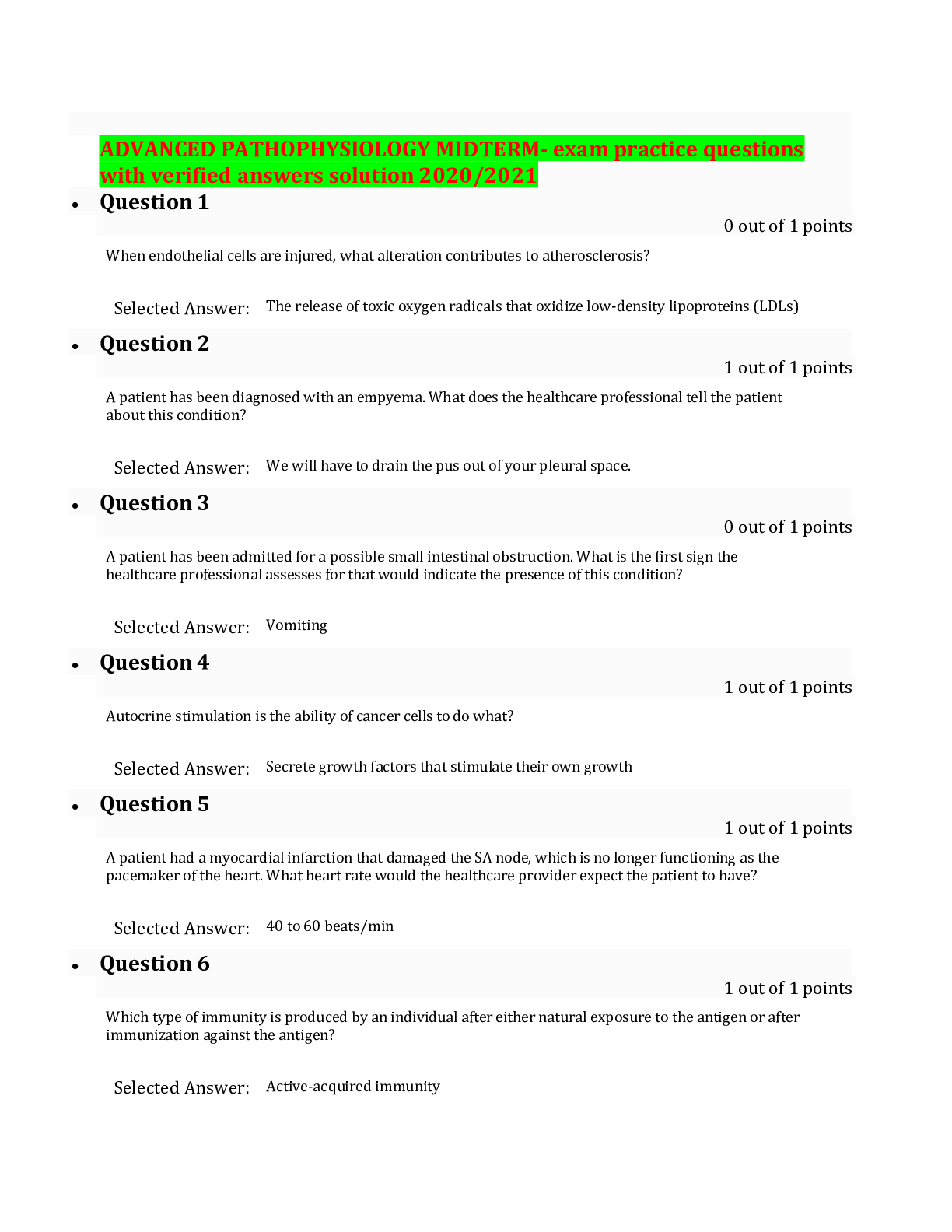
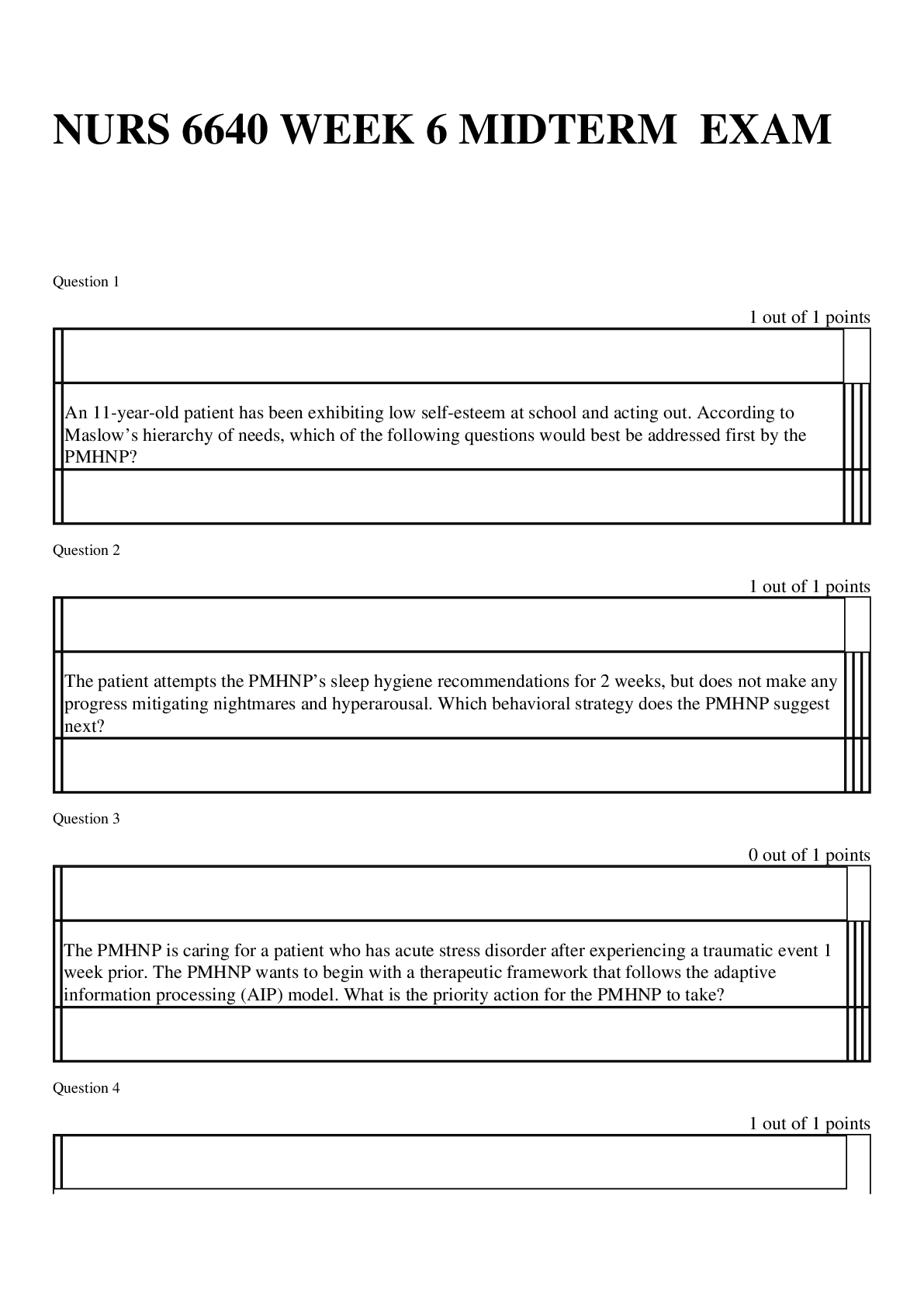

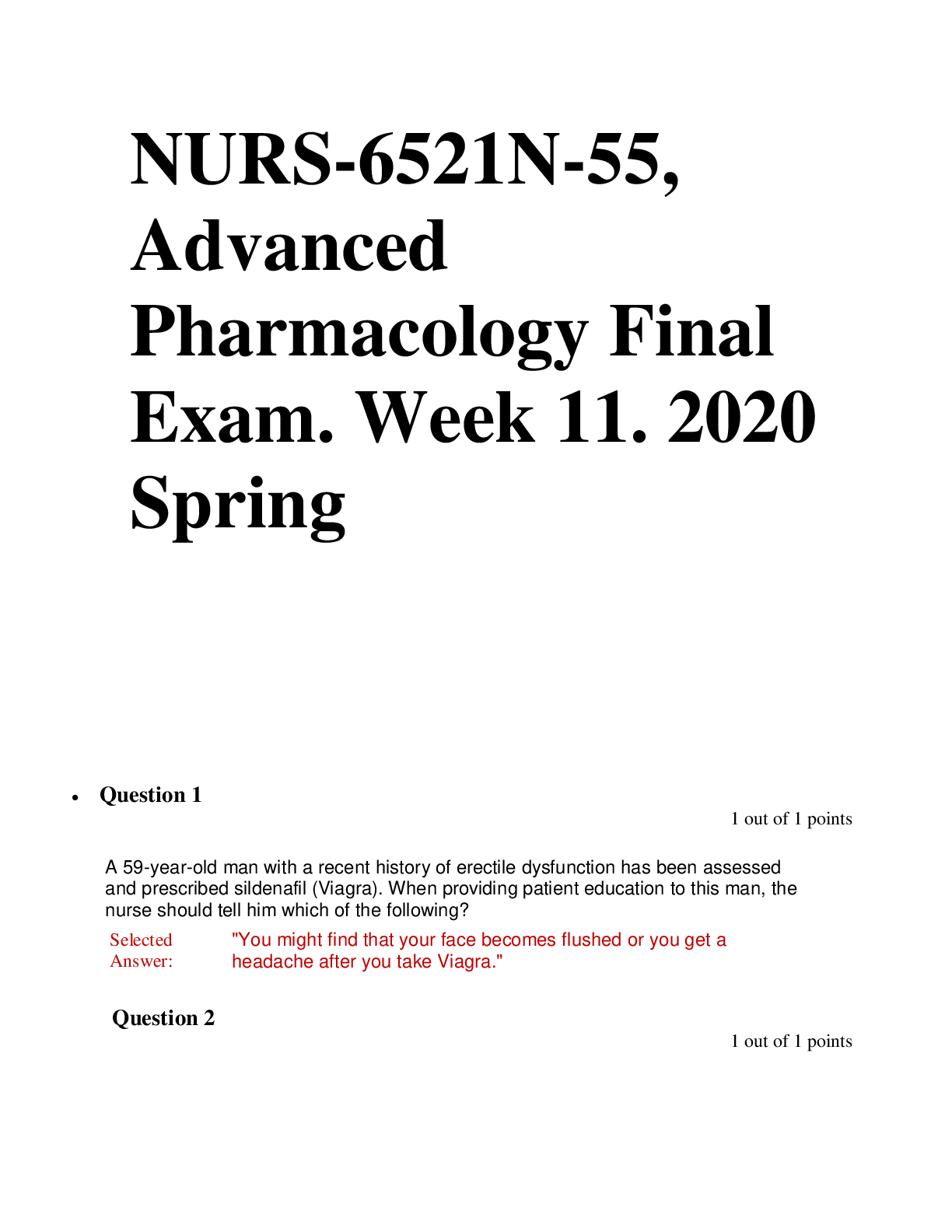
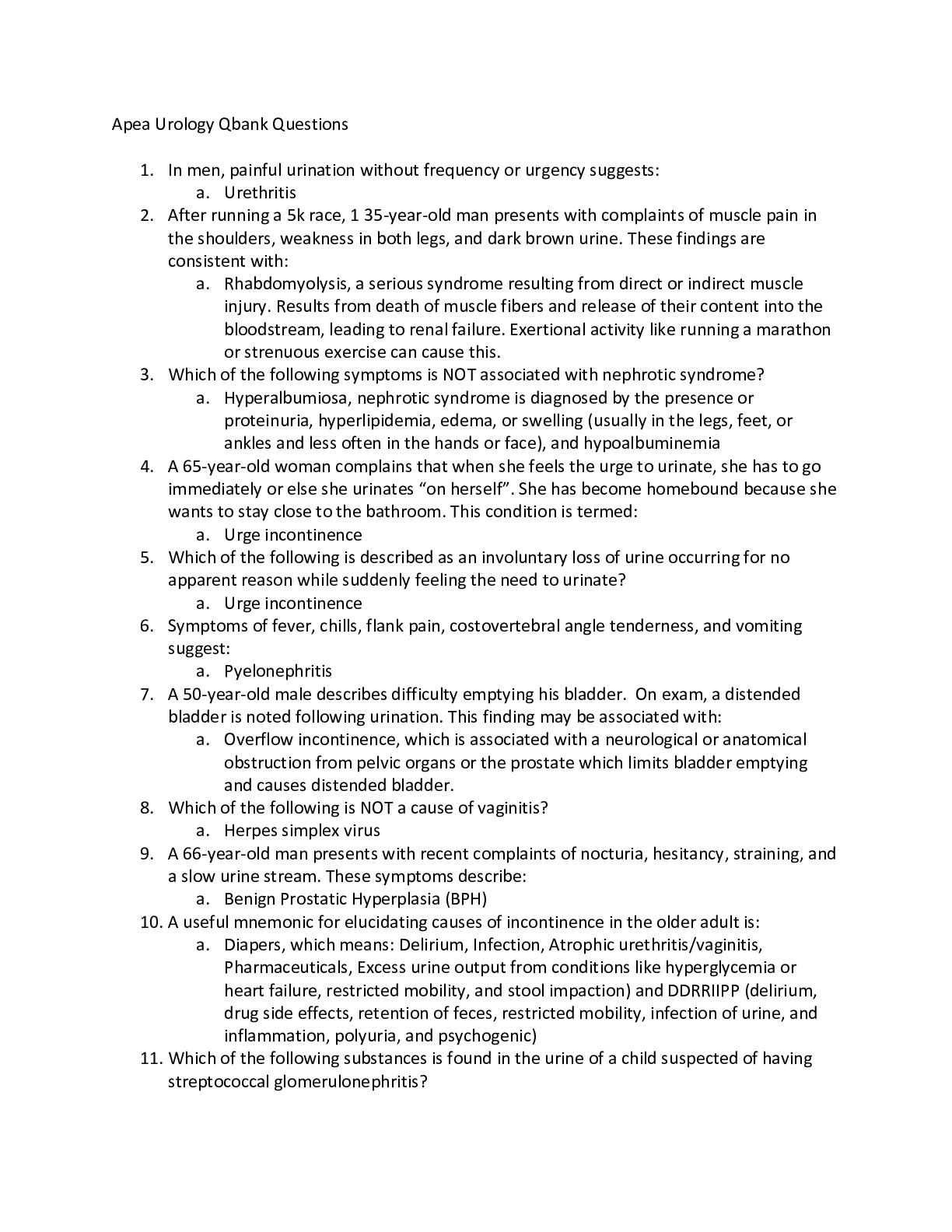
 2021.png)

